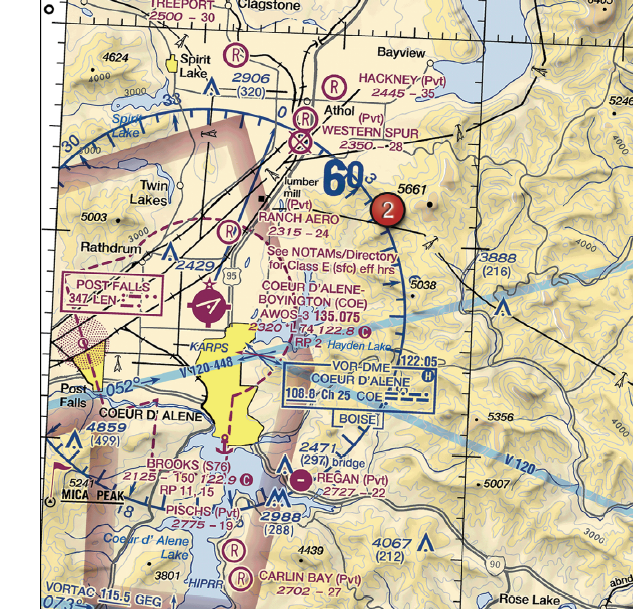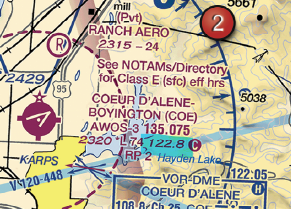FAA(Refer to FAA-CT-8080-2H, Figure 22, area 2.) At Coeur D'Alene which frequency should be used as a Common Traffic Advisory Frequency (CTAF) to monitor airport traffic?
- ❌A:122.05 MHz.
- ❌B:135.075 MHz.
- ✅C:122.8 MHz.

FAA-CT-8080-2H Figure 22 Area 2 - Click to enlarge.
Answer Figure

Click to enlarge answer figure
Explanations
- A: Incorrect. While 122.05 MHz is a valid aviation frequency, it is not assigned to Coeur D'Alene. Using the wrong frequency can lead to miscommunication, posing safety risks such as collision and damage. Moreover, it can result in regulatory violations, affecting your business reputation and potentially leading to fines.
- B: Incorrect. 135.075 MHz is typically used for weather or enroute traffic, not local advisories. Utilizing the wrong frequency can result in missed critical information, increasing the risk of accidents and regulatory non-compliance. This can impact your business operations, client trust, and profitability.
- C: Correct. 122.8 MHz is the published CTAF for Coeur D'Alene, used for self-announced traffic at uncontrolled airports. Using the correct frequency ensures safety by preventing collisions and damage, complies with FAA regulations, and contributes to smooth business operations, thereby enhancing client satisfaction and business reputation.
🧭 Instructor Note
Why This Matters for Your Business
Understanding and using the correct CTAF is crucial for safe and efficient operations near airports. Miscommunication or lack of communication can lead to safety risks such as collisions and damage to property. Moreover, regulatory non-compliance can result in fines and damage to your business reputation, affecting client trust and profitability.
Safety & Liability Considerations
Using the correct CTAF is a key safety measure to prevent collisions and damage. It is important to always verify the correct frequency for the specific airport you are operating near. Miscommunication or lack of communication can lead to accidents, posing a risk to people and property.
Consider This Scenario
Imagine a scenario where a drone operator is hired to conduct a real estate aerial photography mission near Coeur D'Alene airport. The operator, unfamiliar with the area, mistakenly uses the wrong CTAF. This leads to a near-miss situation with a manned aircraft, causing panic and confusion. The incident results in a regulatory investigation, damaging the operator's reputation and leading to loss of clients.
What the FAA is Testing
The FAA is testing your ability to identify and use the correct CTAF for a specific airport. This is a critical skill for safe operations near airports and compliance with FAA regulations.
Business Success Strategy
Always verify the correct CTAF for the specific airport you are operating near. Practice mock self-announcements and listen to real CTAF transmissions to familiarize yourself with the protocol. Clear and correct communication can enhance safety, regulatory compliance, and client trust, contributing to your business success.
Memory Aid
CTAF: Common Traffic Advisory Frequency. Find it on the airport chart. It's the number BEFORE the circled C.
Enhanced References
FAA-CT-8080-2H, Figure 22, area 2; ACS section UA.V.B.K6a; Business case studies on the importance of correct CTAF use.
Related Concepts
- CTAF Protocol: Pilots announce position and intentions for traffic deconfliction at non-towered fields.
- Chart Legend Decoding: Aeronautical charts display communication frequencies for airport operations.
- Remote Pilot Role: Monitoring and announcing enhances safety during arrival and departure.
ACS Code: UA.V.B.K6a
Difficulty: basic
